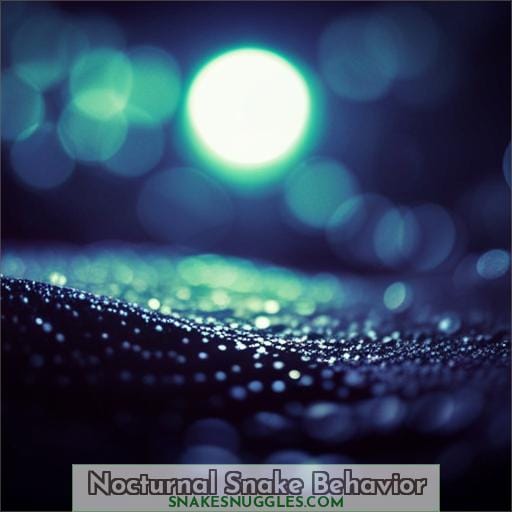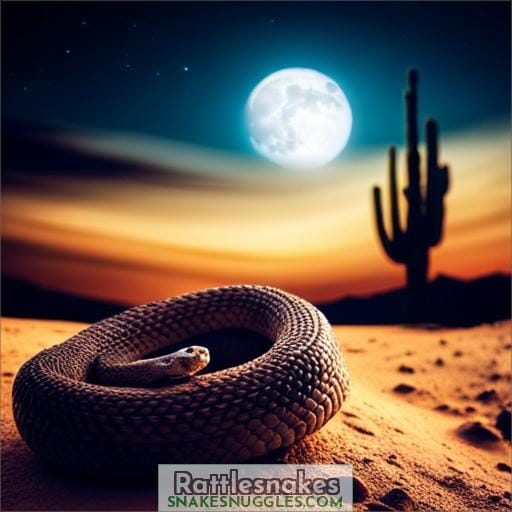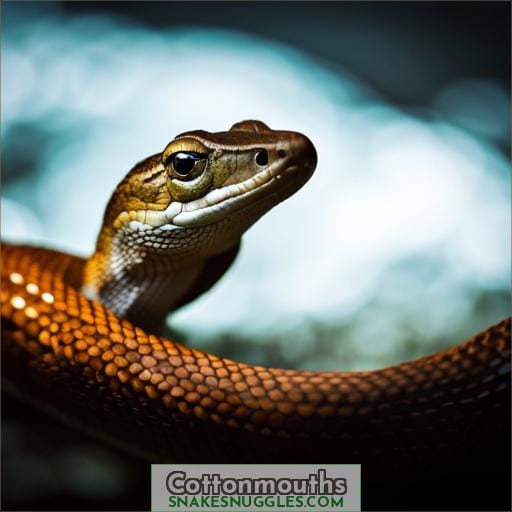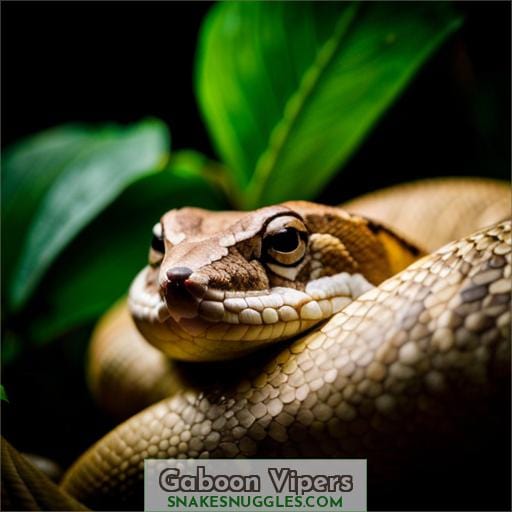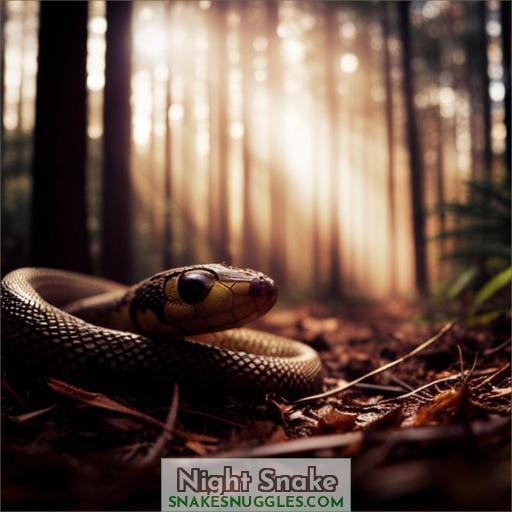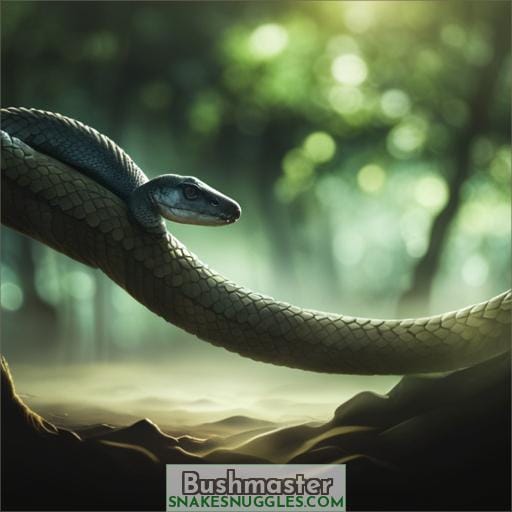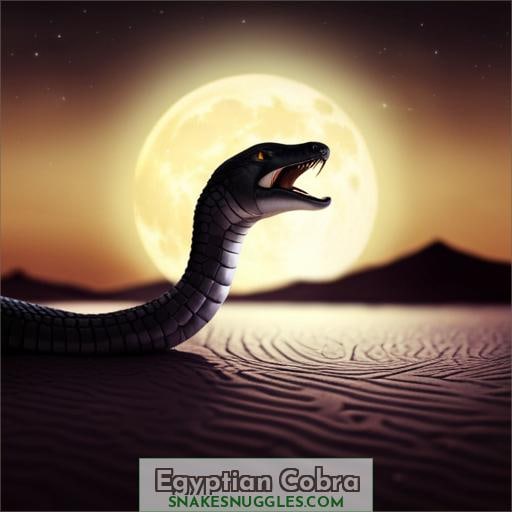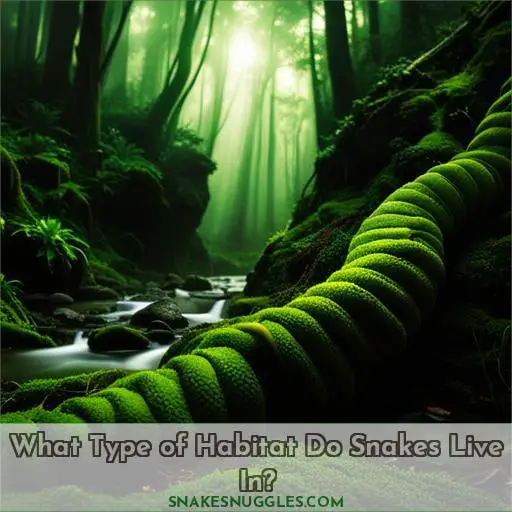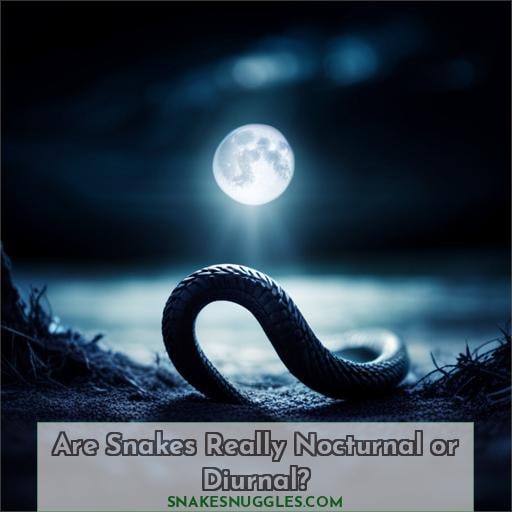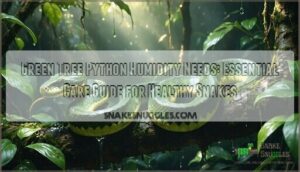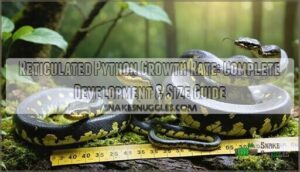This site is supported by our readers. We may earn a commission, at no cost to you, if you purchase through links.
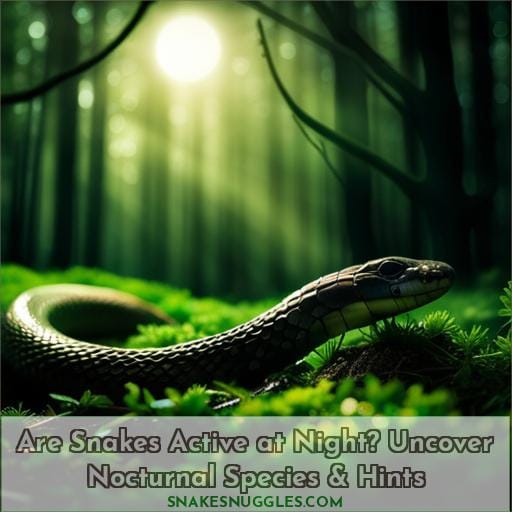 Ready to learn about some of the nighttime predators that you don’t want to run into on your next camping trip? Snakes, often feared and misunderstood, are a common inhabitant in many ecosystems. But how active are snakes at night? To answer this question we must explore which species of snake prefer nocturnal activity and what type of environment they live in.
Ready to learn about some of the nighttime predators that you don’t want to run into on your next camping trip? Snakes, often feared and misunderstood, are a common inhabitant in many ecosystems. But how active are snakes at night? To answer this question we must explore which species of snake prefer nocturnal activity and what type of environment they live in.
Are these slithering creatures really diurnal or nocturnal hunters? Let’s discover together! We’ll take a look at seven popular species known for their hunting prowess after dark: rattlesnakes, cottonmouths, boa constrictors, gaboon vipers, night snakes, bushmasters, and Egyptian cobras.
Table Of Contents
Key Takeaways
- Nocturnal snake species have evolved special adaptations for hunting in darkness.
- Snakes adapt to various habitats, ranging from forests to wetlands.
- Snake activity varies with climate and temperature fluctuations.
- Taking simple precautions around homes can minimize snake encounters.
Nocturnal Snake Behavior
You may already be familiar with the nocturnal habits of certain snake species, as they use specialized adaptations to hunt in darkness. Rattlesnakes and cottonmouths rely on their pit organs for temperature sensing and infrared vision, enabling them to detect prey movements.
Boa constrictors ambush their targets, while Gaboon vipers are swift hunters armed with deadly venom. Night snakes specialize in hunting lizards using specialized venom, while bushmasters employ ambush tactics during nighttime hunts.
All these nocturnal predators share similar traits like adaptability to different habitats from forests, wetlands, or deserts – some even taking advantage of water bodies – combined with a preference for either diurnal or nocturnal behavior depending on climate variations such as temperature shifts throughout the day/night cycle.
Commonly encountered species include rattlers, copperheads, garters, corn snakes, or king cobras; each equipped with its own adaptation that allows them an easier time catching food when light levels drop low enough at nightfall shadows providing cover for both predator and potential victim alike!
Taking precautions can help reduce the risk of encounters by removing shelter options around homes (tall grasses, etc.
Rattlesnakes
Surprise yourself by discovering that rattlesnakes are capable of striking accurately up to one-third of the time in complete darkness! Rattlesnakes display nocturnal behavior as they hunt small mammals with infrared detection and specialized venom.
Their pit organs provide infrared sensing abilities, allowing them to ambush prey without relying on their eyesight.
The snakes take advantage of nightfall shadows for hunting and mating. Copperheads are most active around dusk or dawn when temperatures are warmer. During the summer months, snake activity increases due to competition for mates and a need for shelter from heat.
Snake senses like smell and heat sensing help locate prey in the dark. However, understanding snake habits is crucial for outdoor safety at night since only 3% of US snakes have venomous bites. These bites can be prevented by removing cover from homes or sealing cracks in walls where smaller snakes might enter through seeking food sources or moisture.
Taking precautionary measures such as trimming bushes and cleaning lawns regularly, while avoiding overwatering, reduces the risk of encounters with these predators lurking near twilight hours.
Cottonmouths
Cottonmouths have heat-sensing pit organs, which enable them to hunt efficiently at night. Their ambush tactics and venom delivery systems make them formidable predators in the dark.
Cottonmouth behavior varies between daytime hunting for amphibians and nocturnal hunts for small mammals, such as mice or voles. They use their large bodies to hide in wait until suitable prey approaches. They rely on their sensitive pit organs to detect movement from a distance before striking quickly with deadly accuracy.
Their versatile hunting strategies also help cottonmouths survive through seasons of food scarcity. They take advantage of available resources like frogs, lizards, snakes, eggs, fish, or carrion. Copperheads are known for exhibiting similar nocturnal habits. However, copperhead activity usually peaks around dusk rather than during the night hours.
This is mainly because they prefer warmer temperatures over colder nights, making it difficult to find warm-blooded mammal prey after sunset without overheating themselves first.
By understanding snake habits, we can better understand how to avoid potential encounters when out at night outdoors, especially if living near areas where these species thrive.
Boa Constrictors
Boa constrictors hunt by ambushing their prey and squeezing them tightly in a deathly embrace, like an iron vice. Boas possess infrared sensing abilities that detect the heat of potential prey from several feet away, allowing for silent strikes with deadly accuracy.
Venom potency is low compared to other nocturnal snakes, such as rattlesnakes and vipers, but still potent enough to immobilize small animals.
Unlike diurnal snake species, boa constrictors are more active at night due to their ambush hunting strategies, which require minimal movement until they strike at unsuspecting targets under the cover of darkness.
These large reptiles inhabit a variety of habitats, ranging from rainforests and deserts to mountainous regions. They can be found on almost every continent except Antarctica! Boas generally rest during daylight hours and become active after sunset when there’s less competition for food sources or opportunity for mating rituals.
This is also when most predators are inactive, so it serves as additional protection against potential threats while traveling between densites or during sleep cycles.
Though boa constrictor activity tends towards dusk through dawn, their movements may vary depending upon location. Some will retreat back inside den sites shortly after midnight, whereas others may remain out longer throughout nightfall if temperatures remain favorable or if preying opportunities persist late into evening hours.
Either way, these powerful creatures rely heavily upon both sight and smell sense organs (in addition to infrared) in order to determine ideal times and locations to engage in successful hunts without compromising safety while sleeping during daytime hours.
Gaboon Vipers
The Gaboon viper, with its swift and accurate strikes, lurks in the shadows of twilight ready to deliver a deadly venom. It has heat-sensing pit organs and an uncanny ability to detect prey movements from long distances, allowing it to hunt efficiently even during nightfall.
Its potent venom easily takes down lizards or birds that have become unlucky enough to cross paths with it.
The Gaboon viper has adapted well to temperature and climate changes. It can be found in both nocturnal habitats and diurnal ones, depending on the conditions of its environment.
When hunting at night, these snakes use clever strategies such as camouflage techniques to blend into their surroundings. They rely on smell rather than vision, thanks to the presence of Jacobson’s organ located inside their mouth cavity.
This enables improved scent detection capabilities compared to other species like bushmasters or rattlesnakes, which rely more heavily on infrared sensing abilities through their pit organs for prey detection purposes.
Thus, the Gaboon viper is an incredibly effective hunter, regardless of whether it is active during the day or not.
Night Snake
Night snakes possess specialized venom used to hunt lizards during their nocturnal hours, but do you know how they use it?
Nocturnal adaptations equip these species for night hunting, with swift and accurate strikes. Summer behavior can be an indication of snake activity in the area due to mating season and competition for mates.
Common snakes that are active at night include rattlesnakes, copperheads, garters, corn snakes, water moccasins, and king cobras.
Safety tips should always be followed if encountering a venomous snake, like recognizing habitats such as forests or wetlands which may house them. Be mindful of where one is walking at dusk or dawn when some species are most active.
Wearing protective gear while gardening outside can prevent any hidden predators from surprising you! Snake prevention includes removing cover around your home, like dense vegetation or standing water sources, which attract small rodents – a potential food source for many types of serpents.
Taking these precautions can help reduce the risk of unexpected encounters with dangerous creatures!
Bushmaster
Bushmasters, the large venomous pit vipers, are skilled nocturnal hunters that lurk in twilight hours for birds and mammals. These snakes rely on infrared sensing abilities to detect prey movements and have a specialized venom which they use to immobilize their victims.
Bushmasters can be found throughout Central America inhabiting various habitats from forests to wetlands. They make use of hibernation during the colder months but come out at night when temperatures rise in order to hunt their unsuspecting prey using ambush tactics—a strategy also employed by other reptiles such as geckos or turtles who are active during crepuscular hours like bushmasters.
While snake bites may occur if someone gets too close, understanding these creatures’ habits is essential for safety; taking precautions like sealing cracks or cleaning up yards can help reduce potential encounters with them and other reptiles hunting at night due to temperature regulation needs of all kinds of species including humans!
Egyptian Cobra
You’ll be amazed to learn that Egyptian cobras use their Jacobson’s organ to track down and immobilize prey during the night. These venomous pit vipers, or snake species, are active at dusk and dawn when temperatures are cooler.
Infrared sensing organs help them detect the heat of potential prey. Mating season brings out these male predators in droves as they search for a female mate.
As snakes become more active due to warmer weather, it’s important to take precautions if you plan on spending time outside at night or in the early morning hours where these creatures might lurk! Snake protection involves removing brush piles and other hiding places around your home.
What Type of Habitat Do Snakes Live In?
The Egyptian cobra is an iconic nocturnal snake, but all snakes have their own unique hunting strategies and adaptations. Snakes are cold-blooded amphibians that feed on prey such as small animals or insects.
They use a variety of methods to find them. Nocturnal species rely on infrared sensing organs to detect prey movements in the dark, while others may use special venom to immobilize food sources. Gecko species also exhibit nocturnal behavior with specialized mimicry skills, allowing them to catch insects without being seen by predators during the summer months when they’re most active.
Some snakes take advantage of the cooler night air and become more active during summer nights. They seek shelter from extreme temperatures in tall grasses or under rocks and trees near human dwellings, where they can ambush unsuspecting rodents looking for food sources like garbage piles around homes and yards.
Understanding snake habits helps protect against potential encounters. Removing cover materials like woodpiles and trimming bushes regularly around your property can help deter any unwelcome visitors from taking up residence there.
Are Snakes Really Nocturnal or Diurnal?
You can often hear the rattles of a nearby rattlesnake in summer evenings, as they emerge from their dens to hunt for prey. Snakes are active at night due to their nocturnal nature and adaptations like infrared heat sensing capabilities used by some species like pit vipers and cobras.
These snakes rely on smell tracking and venom types that allow them to locate, immobilize, or suffocate prey during nighttime hours.
Temperature regulation is an important factor for snake activity because they prefer warmer temperatures when out hunting during mating season. This is why copperheads tend to be most active around dusk or dawn when it’s cooler outside yet still warm enough inside the den.
To prevent snake sightings near homes, take precautions such as removing cover items like tall grasses, trimming bushes away from walls or decks where snakes may hideout seeking shelter & moisture sources while also being able to access food sources quickly after dark.
Additionally, reducing humidity levels by repairing leaky faucets & avoiding over-watering lawns will deter coral snakes who favor wet areas with shallow water bodies elsewhere in your yard.
Frequently Asked Questions (FAQs)
What is the difference between nocturnal and diurnal snakes?
Nocturnal snakes hunt and feed at night, while diurnal ones are active during the day. Rattlesnakes, cottonmouths, boa constrictors, and bushmasters have adapted to take advantage of nocturnal prey.
Are rattlesnakes more active during the day or night?
Rattlesnakes are more active at night, as they rely on their infrared sensing abilities and pit organs to detect prey movements.
What type of venom do bushmasters have?
Bushmasters, large venomous pit vipers, possess a potent neurotoxin that can kill small mammals. These nocturnal hunters lurk in shadows and use swift strikes to ambush their prey.
How can I tell if a snake I see is venomous or not?
To identify a venomous snake, look for the tell-tale signs of its triangular head shape and elliptical pupils. Pay attention to patterns like stripes or diamond shapes along its body. If you hear an unfamiliar sound, it could be the rattling of a rattlesnake – stay alert! Exercise caution when around snakes; even non-venomous ones can bite if threatened.
What are some common safety measures for avoiding snake encounters?
To avoid snake encounters, take precautions such as removing cover and trimming bushes. Seal cracks and crevices to keep snakes out of your home. Address moisture sources, such as leaks or over-watering, which attract snakes seeking shelter or food.
Conclusion
Like a detective on the hunt for clues, uncovering the nocturnal habits of snakes can be a tricky business. Many species of snakes are active at night, using specialized adaptations for hunting and thermoregulation.
Rattlesnakes, cottonmouths, boa constrictors, gaboon vipers, night snakes, and bushmasters are just some of the species that hunt in the dark.
Each species prefers different habitats, although many make use of dense vegetation and shady areas to escape the heat of the day. Knowing which species are active at night can help protect against potential encounters.
Taking precautions such as reducing cover, trimming bushes, and sealing cracks can reduce the risk of snake presence and ultimately help keep you safe at night.

